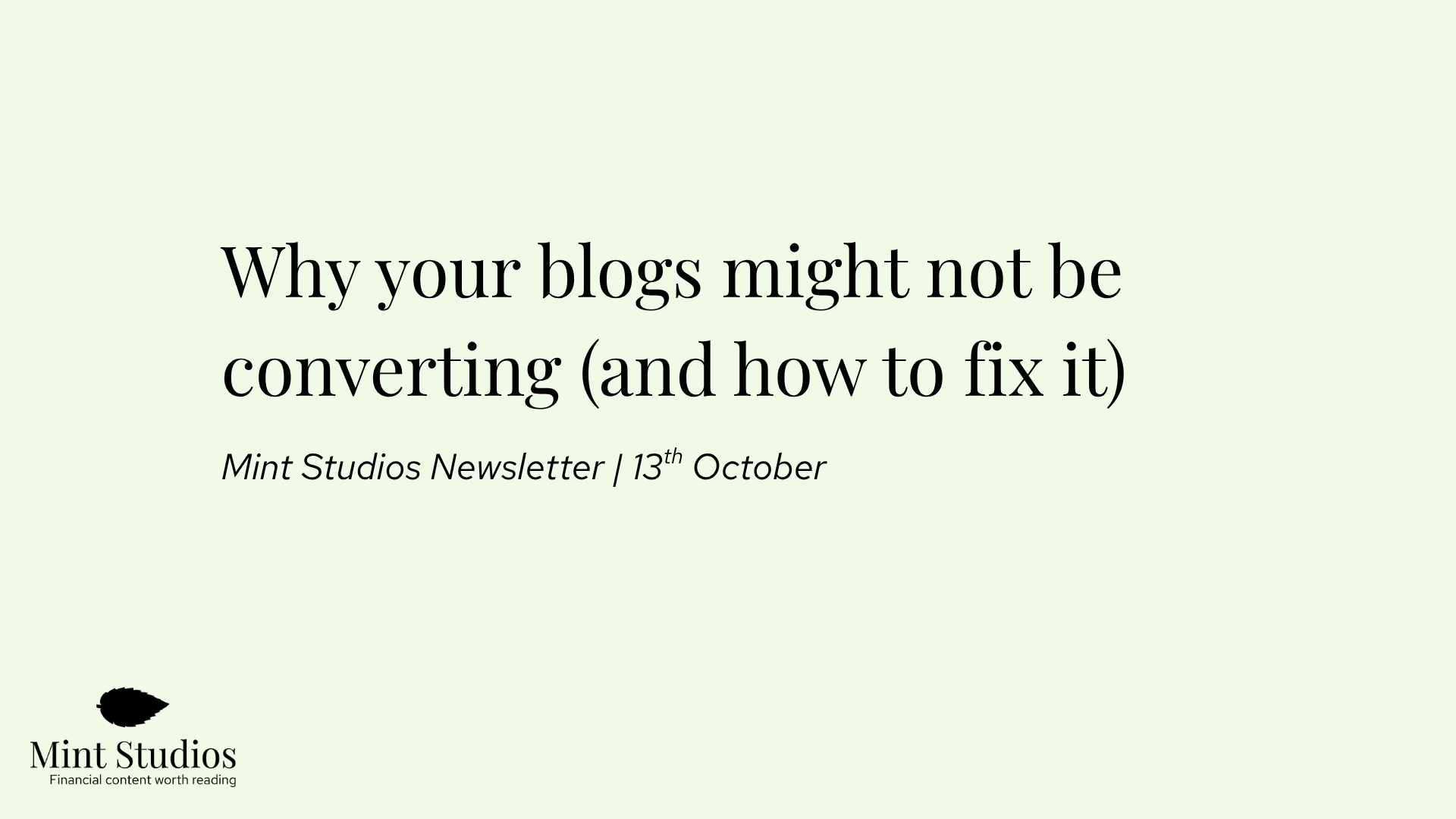Another neobank? Really?
Anyone who consumes financial technology news or is in the fintech world has thought this at least once. We see the words “app-only bank” “a new way of online banking” “take control of your money” and “banking, but better” and we start thinking that really, there are too many of them.
But the truth is: there aren’t. In fact, in this article we make the case that there aren’t enough! There are still many customers that are underserved and underbanked, and still a lot of work for neobanks and fintechs to do. As you’ll see from this list, there are many different ways neobanks and fintechs can serve customers. Many of the smaller neobanks simply don’t get as much attention as the Revoluts, Chimes and Monzos of the world.
We put together a list of top neobanks in Europe and the US that are doing things differently, whether it’s through their product, their target market or their marketing strategy. Our aim is to give a shoutout to those fintechs who have the courage to be a little unusual. 👇
Cleo
Cleo is an AI-powered chatbot that works as a neobank. You chat to “Cleo”, an intelligent assistant who helps you manage your money. Cleo is based in the UK, but has since expanded and seems to be more popular in the US.
We’ve been a fan of Cleo ever since we discovered them over a year and a half ago. They aren’t mentioned in many fintech lists, and yet we feel their product is incredibly unique and forward thinking.
Cleo has truly redefined what digital banking is: instead of entering a banking app, checking your money, searching for transactions and sending money to friends, all you need to do is ask Cleo a couple of questions and she’ll do the legwork. Ask her questions such as “do I have enough money for pizza tonight?” or “can I afford a new coat?” and she will give you a response based on the data and how you’ve configured her.
Many fintech thought leadership articles talk about how the future is all about data analytics and chatbots. You read those articles and then things: yes, this is the future. In the future, you won’t need to search, click on buttons, or figure out how to use a product. You will simply ask a chatbot, and they will guide you.
But it’s not the future, it’s the present. Neobanks like Cleo are taking AI and chatbotting seriously and it’s incredible to watch. The technology is here, but the reason it hasn’t caught on is because the customer base isn’t ready yet. We’re not used to interacting with chatbots and many still think advanced fintech is challenger banks like Revolut or Chime. But it’s possible that advanced fintech is a mobile app like Cleo.
For any fintech and tech nerds out there, we urge you to download Cleo and play around with it. You’ll be able to see the power of AI and chatbots right in front of your eyes.
You may also like: 6 Examples of Great Fintech Brand
Their Instagram is hilarious.
Qube
Qube is a neobank based in America that focuses on helping users budget their finances carefully.
Instead of categorising your expenses after you spend, Qube puts your money into various categories (they call it Qubes) before you spend. That means that you have several sub-accounts within your main account. Every time you spend money, you pick which category you want your money to come from. This is different to how other digital-only banks such as Varo, Revolut or Chime operate.
It’s very nitty gritty personal finance, and not for everyone. But we think it’s very useful to those who are on a very tight budget (students?) or who are paying off debt. They keep track of everything you spend, they have no transaction fees, and they offer the regular user-friendly features that other neobanks offer such as a current accounts, savings and companion cards.
We’re also big fans of their video!
Karat
Karat is a neobank and business debit card based in the US that specifically targets content creators.
This is another neobank with a unique target market and branding strategy. On their website and Notion blog, they explain that many creators are left behind by financial institutions – these are creators who are entrepreneurs, influencers and people who make most of their money online.
Due to the unique nature of their business, it can be hard for them to get mortgages, credit cards and business loans. What does a traditional bank do with someone who has 500,000 Instagram followers but a short credit history due to their age? Or an immigrant who has over 1 million Youtube subscribers but cannot have access to US credit cards?
Karat aims to cater to this market with very unique features. For one, the Karat card offers better perks the better your social stats and the higher your income. If you have a following of over 100k, they will prioritise you and offer you better features. They also don’t have physical branches and operate via mobile banking.
Forget about the social security card or credit score. Instead they will ask for:
- Your Instagram follower count
- How many sponsorship deals you get
- Your Youtube subscriber count
- Donations on Twitch
- A lot more
You can also design your bank card as you wish. Their tagline sums it up pretty well: “a card based on your social stats”.
They have several famous creators that are already part of their user base, including TheRussianBadger (YouTube: 2.7M, Twitch: 380K), Nas Daily (Facebook: 15M, Instagram: 1.8M), and TierZoo (YouTube: 2M). Their average creator has more than a million followers!
For the moment, Karat is a pretty unique product offering banking services to a very niche target market. But we believe we’ll only be seeing more of this in the future: products based on what you’ve achieved, your identity and personalised according to what you specifically need. Karat is the perfect example of a target market that is still underserved.
Stash
Stash’s main product is similar to other advanced neobanks: they offer an investment account that allows you to invest in fractional shares, crypto, ETFs and personal guidance on how to reach your financial services goals and automated features to help you save and invest.
The reason we are including them in this list is because they adopted an interesting marketing strategy throughout the Coronavirus pandemic: the Stock Party. The Stock Party is a marketing strategy they set up on Twitter: every weekday, Stash announces on Twitter that they will be giving away stock that day (in fractional shares) starting at 4pm. People can increase the "party power" by recruiting friends and encouraging more participation. The more people you recruit, the more stock is allocated to you and therefore the larger your award (everyone gets the same amount).
The Twitter hashtag #StashStockParty has helped get the word out and gone viral. It’s also been a great way to gather the community of people who use Stash. According to Stash, 65% of the participants in Stock Parties hold more investment in their portfolios thanks to the Stock Party. In addition to that, 30% of customers who received a reward then went on to make additional investments into that security. Some interesting and good stats.
The app also offers cashback, is FDIC-insured, charges no hidden monthly fees and doesn’t have minimum balance requirements.
Whether this is just another “free money” marketing strategy or a real strategy that works, nonetheless, it’s an interesting marketing strategy that helps increase brand awareness and brings the community together during a difficult time.

Pockit
We watch many fintech webinars (and host them too) where everyone says that fintech is about serving the underserved and the underbanked. Many fintechs are doing a great job at serving the underserved, but there aren’t so many that are approaching the underbanked. This may be because the underbanked are harder to reach, not as profitable or not possible to serve due to being mostly cash heavy.
Pockit is an example of a fintech company that is serving the underbanked. Pockit is a UK neobank that targets people who have difficulties opening a checking account, or have been “ignored or rejected by the high street banks”. This may be immigrants, people living on benefits or people who have an incredibly low credit score.
Pockit allows users to get their benefits and wages directly paid into their bank account, and offers “PayPoints” all across the UK where Pockit users can pay cash into their accounts. They also offer online transfers, savings accounts and many other useful neobank features. They don’t get charged ATM withdrawal fees, ATM fees nor overdraft fees. It’s also a great credit builder neobank, since it doesn’t require a credit check and also helps users build their credit score.
Pockit may not be very different to Chime or Starling feature-wise (you can aso pay cash into your account with Starling, for example), but they are different with their branding approach.
They make it quite clear who they are targeting, with their marketing and content production directed towards the underbanked. This helps build trust with the target market because they feel identified and part of a community.
We think Pockit is doing an amazing job at helping those that need help the most. We are not users ourselves so we cannot tell what the customer experience is like, but if the reviews are accurate it seems they offer a much needed product.
What is the best neobank?
The answer to this question obviously depends on your needs, preferences and what country you’re in. If you’re regularly sending money transfers abroad, then a banking solution like TransferWise or Revolut might the best for you. If you want an all-in-one app that does stocks, gold and cryptocurrencies and are based in the US, then an American app like Varo may be a better option.
What do we think? From our own point of view and based on our own needs and preferences, Starling Bank is the best neobank in the UK. At our agency, we’ve all tried quite a few different European neobanks, and Starling has always come on top. A few reasons why:
- Our business bank account is with Starling bank. We love how seamless it is to switch between my (Araminta) personal and business account and send money between the two. We also love the “Pots” function in the business account.
- I (Araminta) use the Starling app for budgeting, and it does everything I need. I can easily categorise all my expenses and get a good overview at the end of the month.
- I like the “request a payment” feature which makes it easy to receive and send money.
- Customer support is great and I love that they sent me a hamper when they made a mistake with a transaction.
- As fintech nerds: they are a bank that takes banking seriously. They’re not trying be cool, or hip, or solve a problem that doesn’t exist. They just want to do a much better job at banking than the big banks. They’ve been profitable for the year, and recently Anne Boden “told the Financial Times her bank was “pulling away” from its start-up peers and was eyeing an initial public offering in late 2022 or early 2023.”
What about in the US? We haven’t been able to try all the neobank accounts in the US, so it’s hard to tell. According to other sources, here’s what others say:
- Chime: best for all finance related activity.
- Current: best for families.
- Varo Money: best for building credit.
To summarise, all these neobanks are doing something unique and worth mentioning. Think of all the underserved markets out there. Is there a neobank catering to them? Could there be? This list only has 5 neobanks, but we know there are many other opportunities out there that could be served by innovative and customer-centric fintechs. Because the truth is that there is still a lot of work to be done in the Fintech world - and obviously not enough neobanks!











